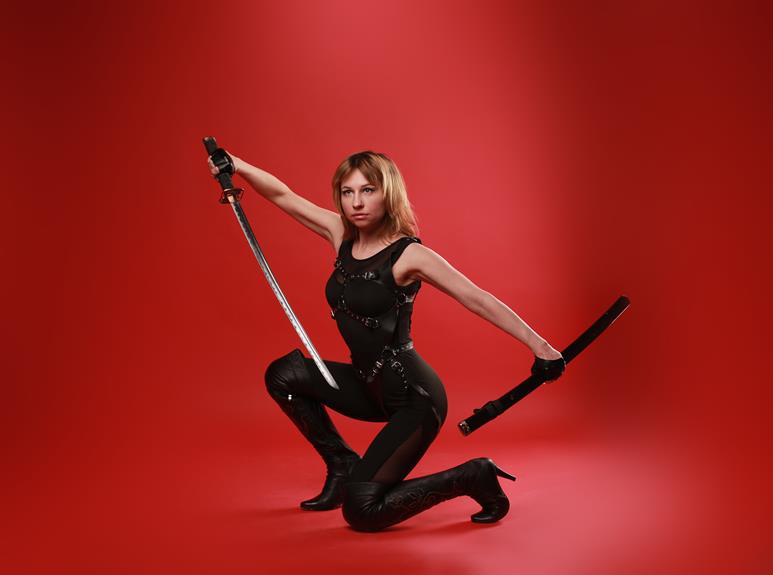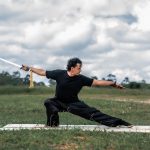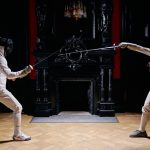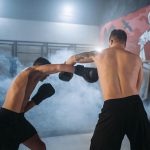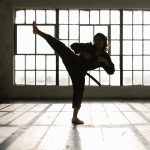Bruce Lee, the legendary martial artist, is often hailed as a master of his craft. Renowned for his lightning-fast speed and unparalleled power, he developed an innovative martial art style called Jeet Kune Do.
This article explores the various martial arts that influenced Bruce Lee's unique approach to combat. From Wing Chun to taekwondo, boxing to judo/wrestling, he sought to extract the most effective techniques from each discipline.
With a focus on simplicity, directness, and adaptability, Bruce Lee's martial art style is a testament to his mastery and diverse influences.
Key Takeaways
- Bruce Lee's martial art style was called Jeet Kune Do, which was founded in 1967 and promoted the use of the best techniques from various martial arts.
- He learned and incorporated techniques from martial arts such as Wing Chun, Tai Chi, Boxing, Taekwondo, Judo/Wrestling, Kali (Escrima), and Fencing into his style.
- Bruce Lee emphasized simplicity, directness, and freedom in combat situations, focusing on using simple and powerful strikes, intercepting and countering attacks, and promoting adaptability and fluidity.
- He opposed the rigidity of traditional martial arts systems, never attained a black belt, and encouraged individuals to find their own way and use what works best for them.
The Philosophy of Jeet Kune Do
The philosophy of Jeet Kune Do emphasizes the fusion of various martial arts techniques and principles to create a dynamic and adaptable fighting style. This philosophy has had a significant impact on modern MMA, as it paved the way for a more open-minded approach to martial arts.
Bruce Lee, the founder of Jeet Kune Do, believed in taking what was useful from each martial art and discarding what was not. He emphasized individuality, encouraging practitioners to find their own way and use what works best for them. This approach challenged the rigidity of traditional martial arts systems and allowed for a greater level of personal expression in combat.
Jeet Kune Do's emphasis on simplicity, directness, and freedom has influenced many fighters in MMA, leading to a more versatile and adaptable approach to the sport.
Wing Chun: Bruce Lee's Main Style
Bruce Lee's main martial art style was Wing Chun, which he learned and incorporated into his own unique fighting style. Wing Chun greatly influenced Bruce Lee's martial art style and philosophy.
As a dedicated Wing Chun practitioner, Bruce Lee adopted its focus on speed, timing, and quick reflexes. He incorporated techniques to redirect an opponent's attack and knock them off-balance, which he learned through private lessons from the grandmaster Ip Man and Wong Shun Leung.
Bruce Lee's approach to martial arts was characterized by his philosophy of Jeet Kune Do, where he took only what he deemed useful from each martial art. He emphasized the importance of individuality and finding one's own way, aiming for simplicity, directness, and freedom in self-defense situations.
Wing Chun played a significant role in shaping Bruce Lee's martial art style and contributed to his innovative approach to combat.
Boxing: Bruce Lee's Training and Success
During his high school years, Bruce Lee trained in boxing and achieved success in a boxing tournament. Boxing played a significant role in Bruce Lee's martial arts journey, contributing to his overall skill and success as a fighter.
Bruce Lee's boxing training helped him develop crucial attributes such as speed, agility, and footwork, which he later applied to his own martial art style, Jeet Kune Do.
Additionally, the techniques and principles of taekwondo, which Bruce Lee learned during his training under Jhoon Goo Rhee, further enhanced his striking abilities, particularly his powerful kicking techniques.
Bruce Lee's boxing training and incorporation of taekwondo techniques exemplify his commitment to mastering various martial arts and combining them to create his unique and effective fighting style.
Taekwondo: Powerful Kicking Techniques
One of the most notable aspects of taekwondo is its incorporation of powerful kicking techniques. Taekwondo's impact on Bruce Lee's kicking techniques can't be understated. As Bruce Lee trained in various martial arts, including taekwondo under the guidance of Jhoon Goo Rhee, he recognized the effectiveness of taekwondo's kicking techniques in real-life self-defense situations.
Taekwondo's emphasis on high, fast, and powerful kicks greatly influenced Bruce Lee's own kicking arsenal. He incorporated taekwondo's dynamic kicks into his martial art style, Jeet Kune Do, which prioritized speed, offensive techniques, and adaptability. Bruce Lee understood that the explosive and precise kicks of taekwondo could be devastating in combat, making them a valuable tool in his own self-defense strategies.
Judo and Wrestling: Influences From the Green Hornet
While filming The Green Hornet, Bruce Lee was introduced to judo and wrestling techniques by Gene LeBell, which greatly influenced his martial art style.
Bruce Lee's training in judo and wrestling provided him with valuable grappling and ground fighting skills that he incorporated into his own fighting system, Jeet Kune Do.
Judo, known for its throws and submissions, taught Lee the importance of leverage and timing in takedowns and immobilizing opponents.
Wrestling, on the other hand, emphasized control, strength, and positioning on the ground.
These influences from judo and wrestling allowed Bruce Lee to develop a well-rounded martial art style that combined striking, grappling, and ground fighting techniques.
Other Influences and Techniques in Bruce Lee's Martial Art Style
Bruce Lee incorporated techniques from various martial arts, such as Kali and fencing, into his martial art style of Jeet Kune Do. These influences allowed him to expand his repertoire and enhance his combat effectiveness. Here are some of the key influences and techniques that Bruce Lee incorporated into his martial art style:
- Influences from Kali (Escrima): Bruce Lee learned kali from Dan Inosanto, which provided him with weapon-based training. This allowed him to incorporate weapons into his martial art style and further develop his understanding of combat.
- Incorporating Weapon-based Training: Bruce Lee's exposure to Kali and weapon-based training allowed him to incorporate weapon techniques, such as knife and stick fighting, into his martial art style.
- Influences from Fencing: Bruce Lee also incorporated fencing techniques and styles into his fighting style of Jeet Kune Do. This included footwork, timing, and the use of the blade in combat.
- Fencing Techniques: Bruce Lee's incorporation of fencing techniques allowed him to enhance his footwork, speed, and timing in combat. He adapted and applied these techniques to his martial art style, making it more versatile and effective.
Conclusion
In conclusion, Bruce Lee's martial art style, Jeet Kune Do, was a culmination of various disciplines, each contributing to his unique approach to combat. By studying and incorporating techniques from Wing Chun, boxing, taekwondo, judo/wrestling, Kali, and fencing, Lee created a dynamic and adaptable fighting style.
One example of the effectiveness of his approach can be seen in his famous one-inch punch. With just a short distance of movement, Lee was able to generate an incredible amount of force, showcasing the power and precision of his martial art style.
- 15 Best Martial Arts Weapons (Fighting & Training) - October 14, 2024
- Is Fencing a Martial Art? (Yes, 4 Reasons Why) - October 14, 2024
- 7 Best Martial Arts for Self-defense Ranked (Highly Effective) - October 14, 2024
